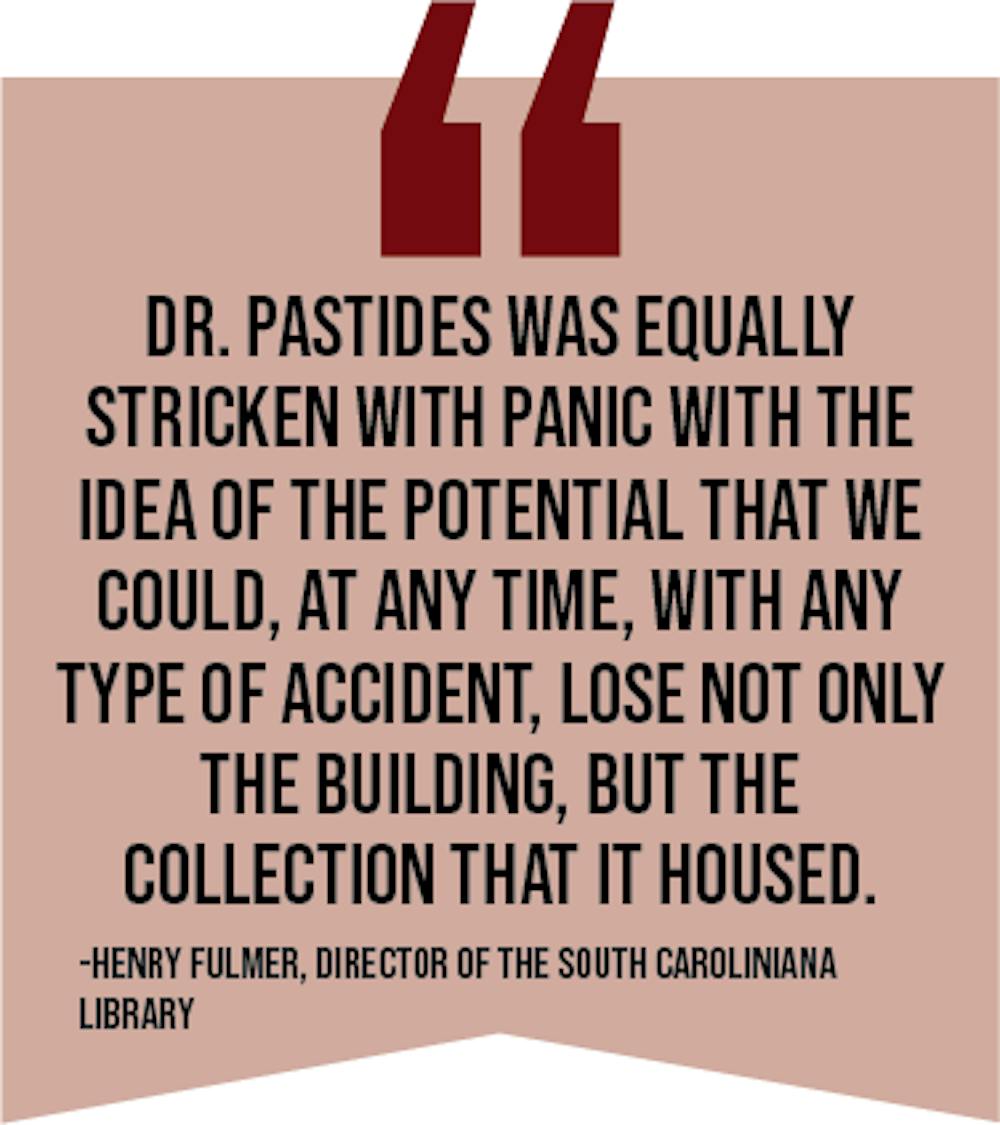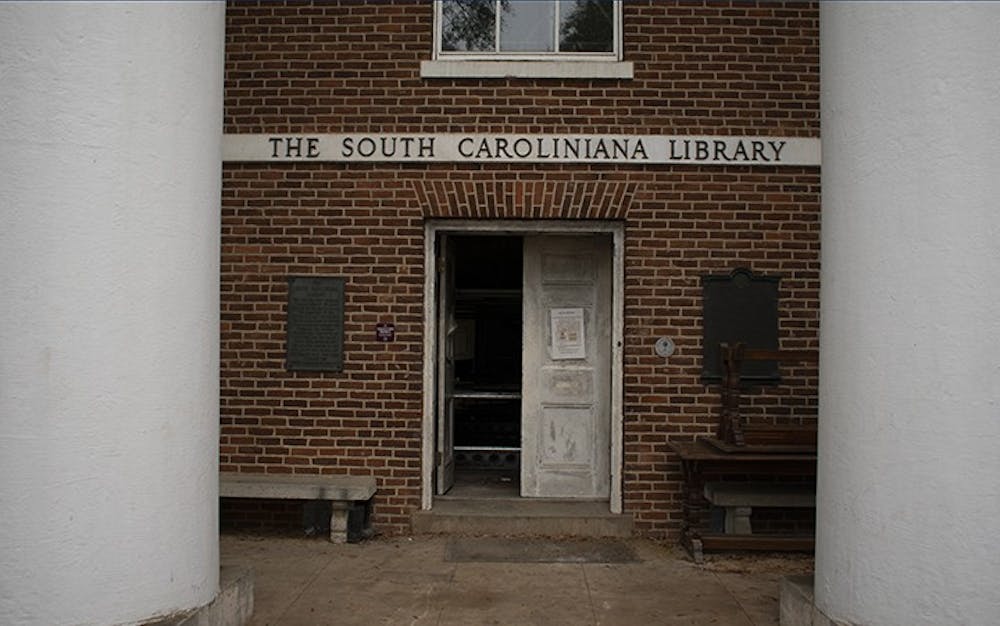The South Caroliniana Library's ongoing renovations, which include fire suppression and extra security for its collection, have changed how it provides access to materials in the meantime, according to library administrators.
Henry Fulmer, the director of the South Caroliniana Library, said renovation plans began after he and USC Dean of Libraries Thomas McNally inspected the building in the lead-up to its 175th anniversary in 2015.
"Dean McNally actually stopped to ask me — we were in the area where collection materials, paper-based books, manuscripts, photographs, things of that sort were housed — and posed the question to me, 'What can you tell me about the fire suppression in a 175-year-old building?'" Fulmer said. "And I walked him around the corner and pointed him to a handheld fire extinguisher. That is basically what began the conversation."
McNally brought his concerns to former USC President Harris Pastides, and they decided the best option was to remove the collection while the building was brought up to code. Fulmer said in an email that other changes to the building will include environmental controls, a "treasure vault" for rare and delicate items and gallery spaces to show off materials to the non-research public.
"Dr. Pastides was equally stricken with panic with the idea of the potential that we could, at any time, with any type of accident, lose not only the building, but the collection that it housed," Fulmer said.

While the renovations are meant to ensure the safety of the collection from fires and other accidents, Fulmer said he also wants to preserve the building's antebellum architecture. He said the library is a national treasure.
"Most people don't understand that that building, the South Caroliniana Library building on the university Horseshoe, is the oldest free-standing academic library in the United States," Fulmer said.
Materials from the collection are housed in many USC buildings and are being served from the reading room on the mezzanine level of the Thomas Cooper Library. However, between the renovation and the COVID-19 pandemic, fewer people are accessing the collection in person.
According to the head of user services at Caroliniana, Edward Blessing, between 1,200 and 1,500 people used the library's collections in a year before the pandemic. Since the pandemic, only about 1,000 people have used the library.
In the wake of the renovation, the library adapted by digitizing materials and using methods such as scan-and-deliver to keep its collection accessible. Blessing said the Caroliniana was in the process of purchasing overhead book scanners when the pandemic began, and they were installed in July 2020.
"We've produced almost 25,000 research scans for patrons since July of 2020," Blessing said.
Despite the longer process of getting materials into the hands of researchers, Blessing said he thinks the library is better at serving each researcher's needs than ever before. He said this is because they are stretching out reference interviews, or the process of understanding and learning about someone's research.
"By stretching that out over the course of days or weeks ... we're able to really add depth to their research that maybe wasn't there as much 20 or 30 years ago," Blessing said.
However, professor and climatologist Cary Mock said the Caroliniana's approach to digitizing documents doesn't totally compare to other reference libraries around the U.S.
"Some of [the other universities], you can download the whole PDF and just go through it very quickly," said Mock, who uses old weather journals in his research of climate trends. "With Caroliniana, I have a little bit of a harder time with some of the materials online, but I haven't looked at them as much as I used to."
Like Fulmer, Mock sees the resources in the Caroliniana collection as invaluable.
"I've gone to about 60 or 70 different archives around the U.S. and Europe, so I think I still had the broad perspective anyway," Mock said. "But the Caroliniana is one of the few places where, essentially, I'd gotten everything I wanted."
Fulmer said he expects the renovations to the South Caroliniana Library building to be complete by early 2022.

